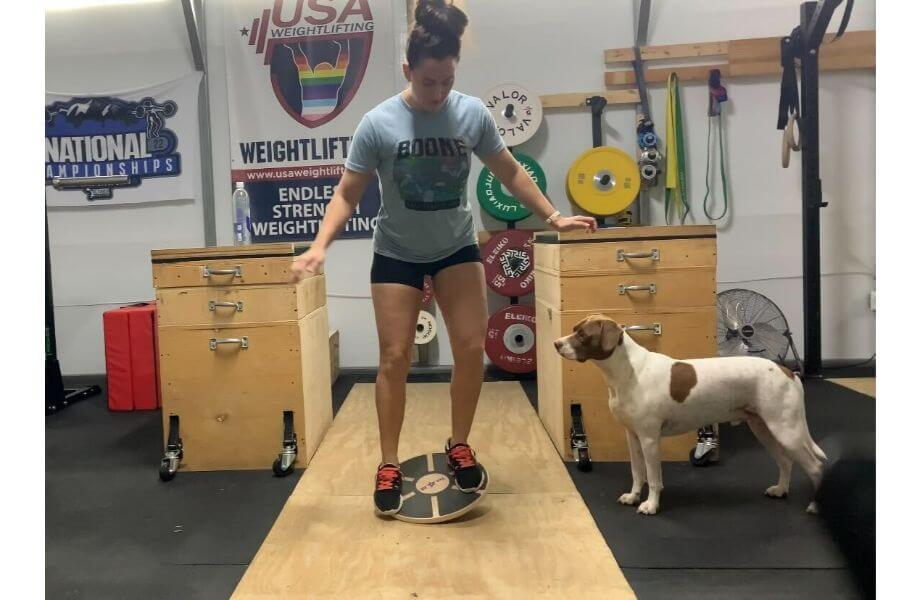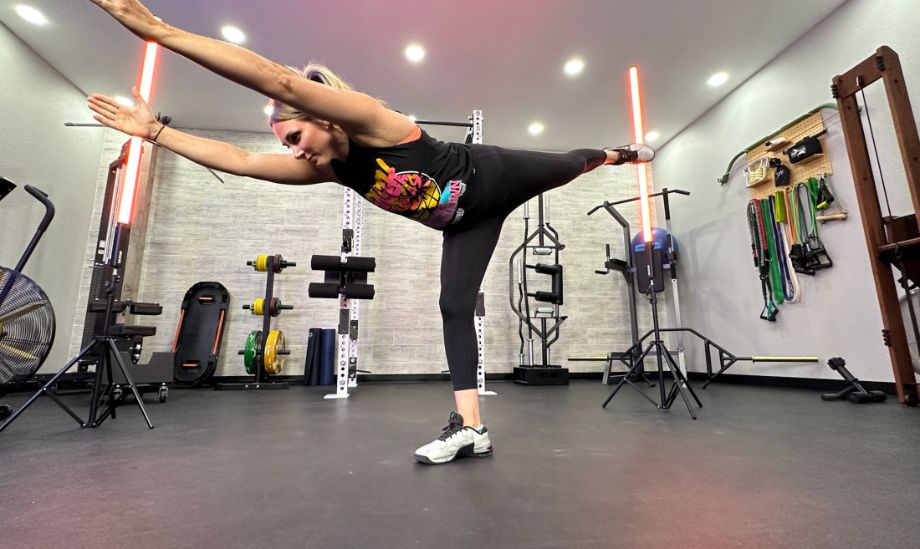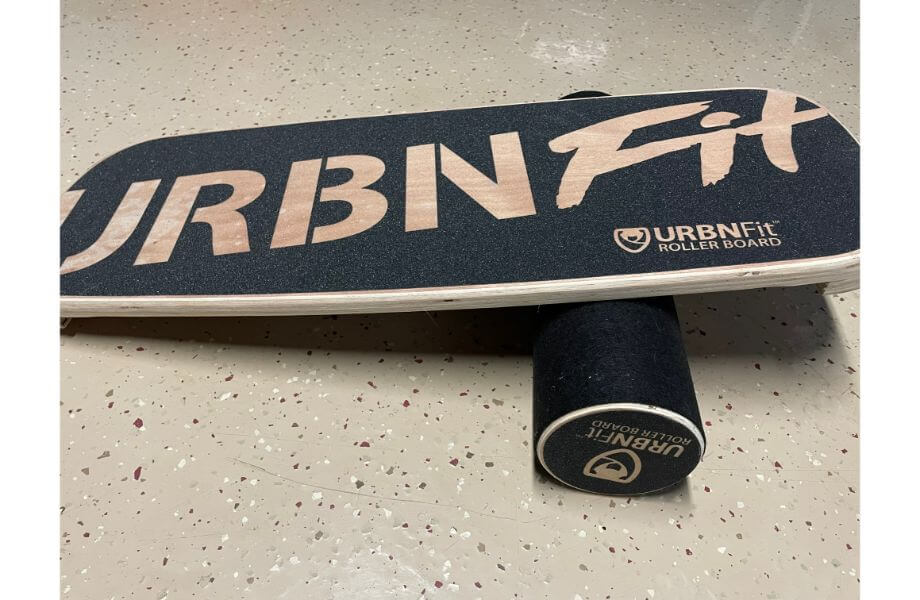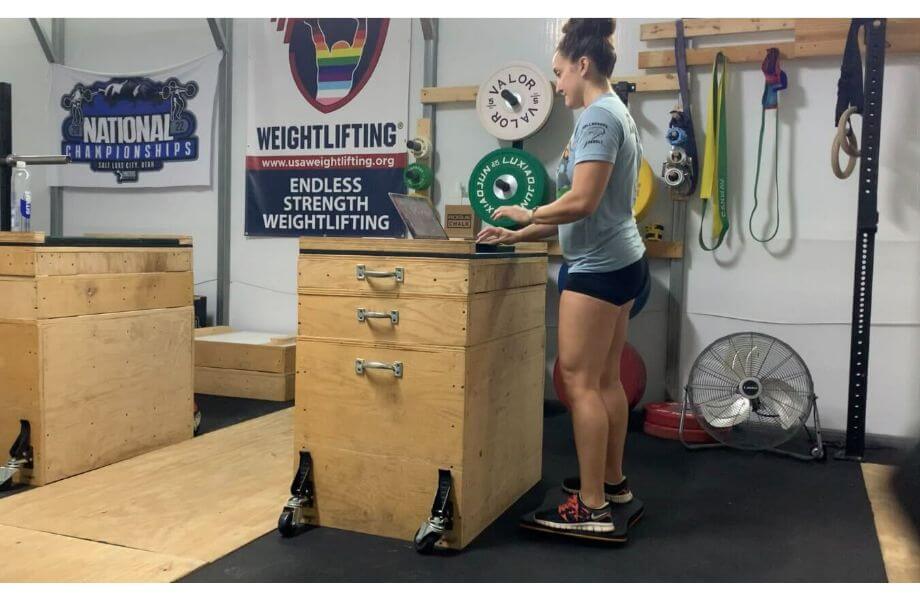We test and review fitness products based on an independent, multi-point methodology. If you use our links to purchase something, we may earn a commission. Read our disclosures.
Whether it’s finding the right blend of cardio vs strength training or figuring out how much carbs, protein, and fat per day is ideal, the central theme remains the same: balance.
This critical concept comes into play in all aspects of life—from how you allocate time for work and your loved ones to how often you pencil active recovery and rest days into your weekly fitness routine. While learning how to create a balanced schedule can be a major mental challenge, it can provide much-needed peace and promote positive health and wellness habits.
RELATED: Exercise and Mental Health
From a physical perspective, developing better balance also offers many advantages—especially if you’re an athlete looking to enhance your performance in the gym, on the field, in the pool, or anywhere in between. But, as is the case with any skill, it takes plenty of practice and patience to make progress.
Luckily, you can sharpen your focus and strengthen your foundation using a piece of fitness equipment specifically designed with stability and steadiness in mind: a balance board. A tool that may help make persistent ankle sprains a thing of the past. I’ll leverage my expertise as a certified personal trainer (CPT) to show you how to take advantage of its design with a beginner-friendly balance board workout that tests your mental resolve as much as your physical prowess.
So, take a few deep breaths, enter Zen mode, and get ready to build a strong base that can withstand whatever life throws your way.
What Is a Balance Board?
Walk into any physical therapy office, and you’re bound to see at least a few seemingly innocuous wooden boards with round bottoms ready for action. Simple in design but effective in preventing lower-body injuries, increasing core strength, and improving posture, balance boards typically have a flat top and dome-shaped, unstable bottom that allows them to move in different directions. Some go on top of a roller, making balance exercises even more challenging.

However, just like the best Olympic barbells or best adjustable dumbbells, there are distinct features that distinguish one type of balance board from another. Here’s a quick overview of what you might see in a rehabilitation center or even a commercial gym:
- Rocker board: Used for stretching, injury recovery, improving mobility, and strengthening your hips, knees, and ankles, this type of balance board has a continuous, balanced arc that curves upward from the center. Also referred to as a “rocker,” it allows users to perform basic balance exercises by rocking front to back or side to side. This makes rockers particularly useful for beginners, as there’s a more limited range of motion and ability to change directions.
- Wobble board: A circular, flat board with a half-sphere bottom, the wobble board allows users to perform balance exercises by tilting and rotating the board in all directions. It provides a much greater range of motion and versatility than a rocker.
- Roller board: Featuring a cylindrical-shaped roller with a flat deck, a roller board is best for surfers and advanced users who want to improve their balance, coordination, and core strength. While the top typically has a textured surface for enhanced grip, it can still be quite difficult to master the art of balancing on such an unstable environment.
- Balance ball: Commonly referred to as a Bosu ball, this isn’t exactly in the same family as a balance board, but it’s close enough to warrant a spot on this list. A half-inflatable exercise ball with a hard, flat surface, you’ll see the Bosu Balance Trainer or something similar in just about every commercial gym. As a CPT, I’ve helped many clients work on their coordination and confidence using Bosu ball exercises.
RELATED: Bosu Ball Lunges
Sample Full-Body Balance Board Workout
This full-body workout consists of 10 movements—all of which make use of a balance board in different ways. I recommend some light cardio and/or a set of warm-up exercises before you hop on board.
Your balance training begins with a few basic moves that will help you get comfortable with this unique piece of equipment. Once you make it through the first three exercises, you’ll hit your quads, glutes, hamstrings, and calves with familiar fundamental movement patterns like the squat and lunge before finishing with a few upper-body and functional core exercises to target your triceps, chest, back, abs, and obliques in this beginner-friendly session.
To keep your heart rate up and maximize the workout’s effectiveness, keep your rest intervals brief (no more than one minute) between sets and no more than two minutes between exercises.
| Exercise | Instructions | Sets | Reps/Time |
| Front-to-back shift | 1. Stand on the balance board with your feet hip-width apart. 2. Hold your arms out in front of you, then slowly tilt the board forward until it touches the floor. 3. Slowly tilt the board back until it touches the floor behind you, repeating the back-and-forth sequence for 30 seconds or the desired amount of time. | 3 | 30 sec. |
| Side-to-side shift | 1. Stand on the balance board with your feet shoulder-width apart, depending on the width of your board. 2. Keep your hands by your sides or on your hips. 3. Slowly tilt the board to the right side until it touches the floor. Then, tilt it to the left side. 4. Repeat the side-to-side sequence for 30 seconds or the desired amount of time. | 3 | 30 sec. |
| Single-leg stance | 1. Stand in the center of a balance board with your weight evenly distributed across both feet. 2. Hold your arms out to your sides so they’re parallel with the floor. 3. Slowly lift and bend your right leg so you’re balancing on your left foot. 4. Hold the position as long as possible, then lower your right leg and repeat on the other side. | 3 | Hold as long as possible on each leg |
| Squat | 1. Stand with your feet a little wider than hip-width, placing them a few inches toward the edge of the board. 2. Hold your arms out directly in front of you so they’re parallel to the floor. 3. Engage your core and slowly bend at your knees to descend into a squat position. 4. Reach a comfortable depth, then push through your heels to stand up and return to the starting position. 5. Repeat for the desired number of reps. | 3 | 15 |
| Lunge | 1. Take a staggered stance with your front foot centered on the balance board and your back foot extended behind you. Make sure your weight is evenly distributed between both legs. 2. Engage your core, then lower yourself down toward the floor until your front leg forms a 90-degree angle. 3. Engage your glutes and drive back up to the starting position using both legs. 4. Repeat for the desired number of reps before switching sides. | 3 | 15 (per leg) |
| Glute bridge | 1. Lie on your back with your knees bent and arms at your sides. 2. Place your feet in the center of the balance board. 3. Engage your glutes and abdominals, pressing your feet into the board to lift your hips off the ground. 4. Squeeze and hold at the top of the movement for 1-2 seconds. 5. Slowly lower yourself down to the starting position. 6. Repeat for the desired number of reps. | 3 | 15 |
| Push-up | 1. Get in a push-up position by placing your hands on the balance board so they’re slightly wider than shoulder-width. 2. Keep your entire body in a straight line with your head in a neutral position. 3. Engage your core, then slowly bend your elbows and lower yourself down until you’re just above the board. 4. Push back up to return to the starting position. 5. Repeat for the desired number of reps. | 3 | 10-15 |
| Dip | 1. Place your hands on the board behind you, extending your legs out in front of you. 2. Start with your arms fully extended, then slowly lower yourself down toward the floor by bending your elbows. 3. Push back up to engage your triceps, shoulders, and chest. 4. Repeat for the desired number of reps. | 3 | 10-15 |
| Mountain climber | 1. Get in a push-up position by placing your hands on the balance board about shoulder-width apart. 2. Alternate driving your right and left knees toward your chest to simulate a climbing motion. 3. Maintain a steady pace for the desired amount of time. | 3 | 30 sec. |
| Plank | 1. Place the balance board in front of you. 2. Rest your forearms on the board so they’re about shoulder-width apart. 3. Engage your core muscles, lifting yourself up into a plank position. 4. Maintain a neutral spine and hold the plank for the desired amount of time. | 3 | 30 sec. |
RELATED: 13 Plank Exercises and Variations
Benefits of Balance Training
In addition to the obvious stability-building upside, there are other reasons to include balance training in your workout plan. Let’s explore some of the benefits of incorporating balance boards and similar types of training into your fitness routine.
Can Improve Your Proprioception
Improved proprioception—the awareness of your body in three-dimensional space—might be the biggest payoff from balance training. This is particularly important when it comes to ankle stability1, as ankle sprains are among the most common injuries athletes and everyday gym-goers deal with. Performing balance or wobble board exercises can help you develop stronger muscles, ligaments, and tendons, resulting in a more stable ankle joint.

According to a 2017 systematic review and meta-analysis in the Journal of Athletic Training2, proprioceptive training programs were effective in reducing the incidence of ankle sprains in the athletic population. Interestingly, this included those with and without a history of ankle sprains. With better balance and proprioception, you also have a lower chance of falling or suffering an injury.
RELATED: Ankle Stability Exercises
Can Enhance Your Muscular Strength and Endurance
While many individuals use balance boards for bodyweight exercises, you can crank up the intensity by using dumbbells, kettlebells, or resistance bands for an additional strength- and muscle-building upside. For example, performing dumbbell curl variations on a balance board can help you sculpt pool-worthy biceps and a stable base.
Or, you can improve your muscular endurance by performing an advanced move like balance board burpees. Either way, it can serve as a platform for targeting multiple muscle groups with compound exercises.
RELATED: How to Increase Strength
May Help With Weight Loss
It’s no secret that you need to be in a calorie deficit to lose weight. However, balance training may offer a small boost in your quest to lose body fat.
A 2018 randomized control trial in Medicine and Science in Sports and Exercise3 aimed to investigate differences in energy expenditure, heart rate, productivity, fatigue, and pain while sitting, standing, or standing on a balance board. Thirty healthy adults employed in sedentary-based jobs participated in the study, typing for 30 minutes in each of the three positions. Interestingly, while measures of productivity did not differ across conditions, results showed that energy expenditure was 14.2% higher when using a balance board than when sitting.
This doesn’t necessarily mean standing on a balance board is the magic answer to losing weight. (Just like sitting on an exercise ball isn’t the magic answer to curing your lower-back pain.) Yet it does show that it could be a way to increase the number of calories you burn per day.
RELATED: Tips on Breaking a Weight Loss Plateau
Can Help Improve Focus
An underrated and often overlooked benefit of exercise is how it can help you develop a stronger, sharper mindset. According to a 2017 study in Scientific Reports4, balance training has led to significant improvements in memory and spatial cognition.
GGR performance editor Anthony O’Reilly, CPT, CNC, is a big advocate of balance board workouts because of their physical and mental benefits.
“I notice that I’m much more stable on my feet at the bottom of a back squat since starting balance training than I was before (especially during heavier lifts),” he explains. “On top of all that, I have ADHD and balance board training has been linked to better management of that condition.”

Anthony’s spot-on, as a 2021 study published in the Journal of Biomedical Physics and Engineering5 supports the use of a multi-sensory balance board for children with Sensory Processing Disorder (SPD) and Attention Deficit Hyperactivity Disorder (ADHD).
“I like to say that my ADHD makes my brain feel like someone sat on a remote,” he explains. “After balance boarding, my brain stays on one channel.”
RELATED: Best Pre-Workout for Focus
Balance Board Training Tips and Safety Precautions
Ironically, working in an unbalanced environment can be the key to becoming a well-balanced athlete. Naturally, that opens the door to slips, falls, and potential injuries.
Follow these safety tips and precautions to maximize your balance training and minimize your risk of getting hurt:
- Choose the right surface: Make sure you have adequate space and the correct type of home gym flooring to support your balance training. I have horse stall mats in my garage gym, which are ideal for balance board exercises since they’re stable and somewhat forgiving if you fall.
- Don’t be shy about wearing protective gear: You wouldn’t think twice about investing in the best weightlifting belt to keep you safe for back squats and deadlifts, right? Take the same approach with balance board training. Although you may look (or feel) like a kid again wearing a helmet and knee pads, your adult self will appreciate the protection they provide.
- Rely on a wall for support: Whether you’re experienced or it’s your first time stepping on a balance board, don’t let your ego get in the way of using a wall (or other surface) for support. Start with basic movements such as slowly rocking back and forth, keeping your hands on the wall just in case something goes wrong. As my mom always says, “It’s better to be safe than sorry!”
- Work with a certified personal trainer or training partner: A certified coach or training partner can provide motivation and assistance during your balance board workout. Beginners can benefit from working with a CPT who will maintain a watchful eye on your form. Meanwhile, having a good spotter—even for something low-impact like balance training—is never a bad idea.
RELATED: How to Be a Good Spotter
Balance Board Workout: Final Thoughts
Balance is a buzzword that gets thrown around quite a bit in the health and fitness world. Unfortunately, achieving it is a lot easier said than done.
Like everything in life, you can’t build anything without a strong foundation. Although it may seem counterintuitive at first, embracing the unstable environment of balance board workouts can give you a valuable leg (or two) up in the long run.
Be patient, follow the safety tips I outlined above, and attack your training with Anthony’s enthusiasm, and you’ll soon become a stronger, more stable version of yourself in all aspects.
Balance Board Workout: FAQs
How do balance board exercises work?
Balance board exercises work by challenging your core strength, coordination, and overall stability. They
What is the difference between a wobble board and a balance board?
Typically round in shape, a wobble board is better-suited for beginners since it has a smaller rolling length than a balance board. A balance board will look more like a wheeless skateboard.
RELATED: Revolution Balance Boards Review
How often should you do a balance board workout for best results?
GGR performance editor and avid balance board user Anthony O’Reilly, CPT, CNC, uses his balance board three to five times a week. Based on my experience as a CPT, this is an appropriate range that should allow you to work on your balance and coordination without overtraining.
What are the best balance board exercises for beginners?
As a CPT and fitness enthusiast, some of my favorite beginner-friendly balance board exercises include push-ups, squats, planks, lunges, and glute bridges. I also recommend stability-focused movements like front-to-back, side-to-side, and around-the-clock (or around-the-world).
References
- Han J, Anson J, Waddington G, Adams R, Liu Y. The Role of Ankle Proprioception for Balance Control in relation to Sports Performance and Injury. Biomed Res Int. 2015;2015:842804. doi: 10.1155/2015/842804. Epub 2015 Oct 25. PMID: 26583139; PMCID: PMC4637080.
- Rivera MJ, Winkelmann ZK, Powden CJ, Games KE. Proprioceptive Training for the Prevention of Ankle Sprains: An Evidence-Based Review. J Athl Train. 2017 Nov;52(11):1065-1067. doi: 10.4085/1062-6050-52.11.16. Epub 2017 Nov 15. PMID: 29140127; PMCID: PMC5737043.
- Nelson MC, Casanova MP, Vella CA. The Effectiveness of Standing on a Balance Board for Increasing Energy Expenditure. Med Sci Sports Exerc. 2018 Aug;50(8):1710-1717. doi: 10.1249/MSS.0000000000001595. PMID: 29494476.
- Rogge AK, Röder B, Zech A, Nagel V, Hollander K, Braumann KM, Hötting K. Balance training improves memory and spatial cognition in healthy adults. Sci Rep. 2017 Jul 18;7(1):5661. doi: 10.1038/s41598-017-06071-9. Erratum in: Sci Rep. 2018 Nov 22;8(1):17434. doi: 10.1038/s41598-018-35957-5. PMID: 28720898; PMCID: PMC5515881.
- Amouei S, Selk Ghafari A, Zabihollah A, Mohammadi Moghaddam S, Mohammadi Laal Abadi Z. Multi-Sensory Balance Board for Children with SPD & ADHD Disorders. J Biomed Phys Eng. 2021 Dec 1;11(6):761-768. doi: 10.31661/jbpe.v0i0.2101-1265. PMID: 34904073; PMCID: PMC8649158.
Further reading

Walking and jogging backwards on the treadmill is not only safe, but it can be beneficial to your joints, increases muscle strength, and improves coordination. Read more

Coffee vs. pre-workout—is one better for powering through a workout? We’ll discuss what you need to know. Read more

In our Xebex Trekker review we’ll explore the treadmill and sled push features on this reasonably priced machine. Read more

Whether it’s finding the right blend of cardio vs strength training or figuring out how much carbs, protein, and fat per day is ideal, the central theme remains the same: balance. This critical concept comes into play in all aspects of life—from how you allocate time for work and your loved ones to how often you pencil active recovery and rest days into your weekly fitness routine. » Read more about: Bid Adieu to Bad Ankles With This Beginner-Friendly Balance Board Workout » Read more

